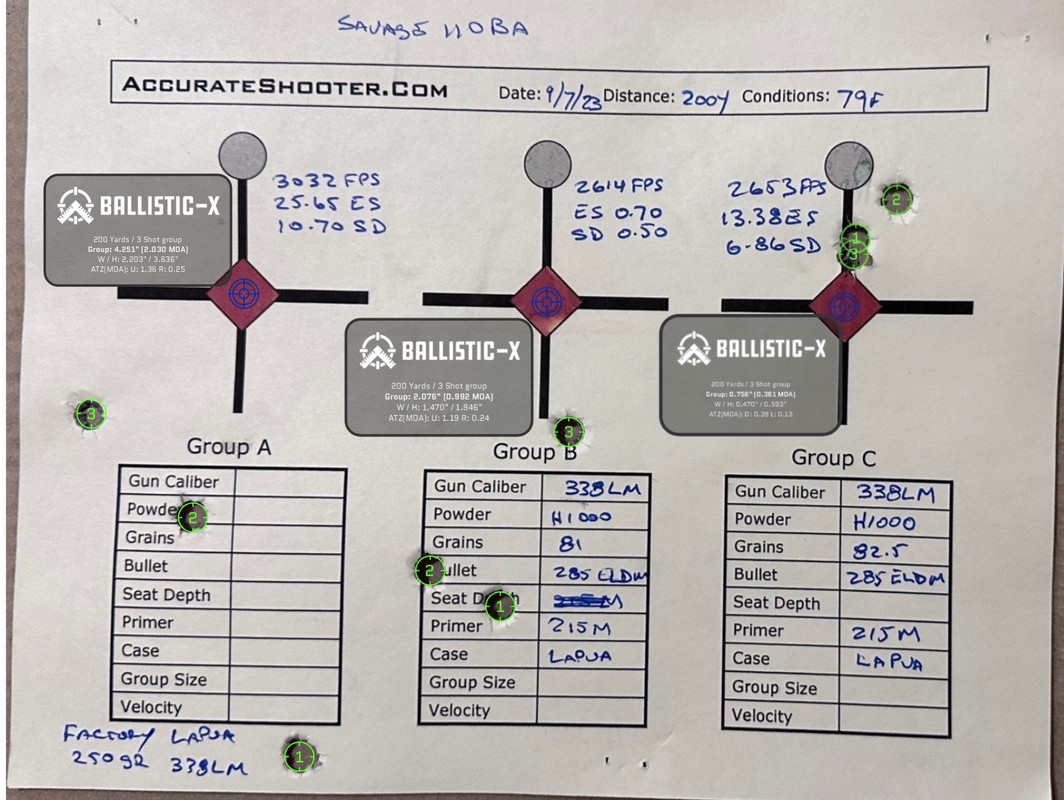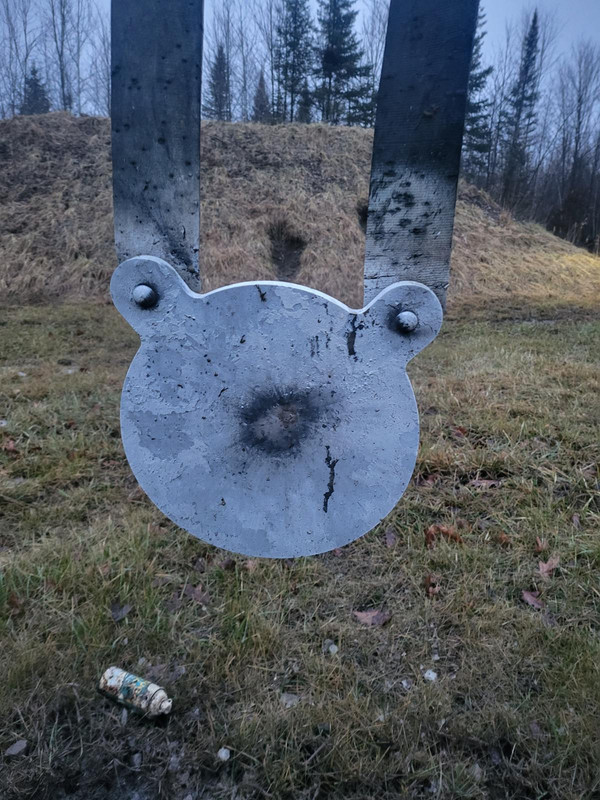What is the question basically:
338 300grin SMK.
The powder weight has been selected and the jumps in speed are minimal; the speed does not change with a difference in the powder weight of 0.3 grains.
The ammunition was tested for thermal stability from +25°C to -15°C; initial velocities were measured at 6 temperatures in this range.
But today, at a temperature of -1, for some reason the vertical corrections began to overestimate; when checking the speeds with a chronograph, the speed crept up by 10 m/s.
And could it be that the cartridges, when fired, may overestimate the value of the initial speed. The cartridges are on the 9th cycle.
338 300grin SMK.
The powder weight has been selected and the jumps in speed are minimal; the speed does not change with a difference in the powder weight of 0.3 grains.
The ammunition was tested for thermal stability from +25°C to -15°C; initial velocities were measured at 6 temperatures in this range.
But today, at a temperature of -1, for some reason the vertical corrections began to overestimate; when checking the speeds with a chronograph, the speed crept up by 10 m/s.
And could it be that the cartridges, when fired, may overestimate the value of the initial speed. The cartridges are on the 9th cycle.





